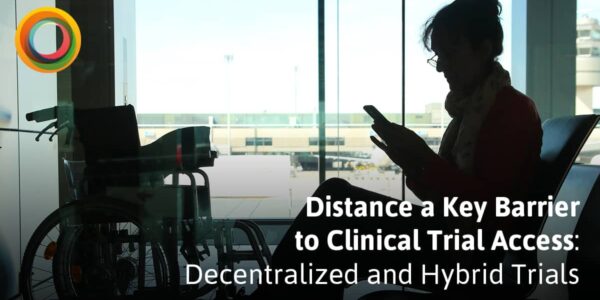
Big Tech’s venture capital operations invested almost $7bn in healthcare start-ups in the 18-months before mid-2021. Technology is the future of healthcare, we hear. And everyone is looking for their slice of the pie.
The industry is excited, with talks of increased recruitment, higher retention rates, more opportunities to enrol diverse patient populations, cost savings and better clinical outcomes. Is technology the fix-all we’ve been waiting for?
The impact of technology in clinical trials
On average, 18% of randomised patients drop out of a clinical trial, costing three times the amount to replace them as it did to recruit them. 38% of these patients said they felt the site visits were stressful.
Decentralised and hybrid clinical trials utilise technology alongside mobile health visits to bring the trial to the patient or the patient to the trial, removing some of the burden of site visits and increasing engagement and retention.
When site visits are necessary, technology allows patients to better manage their travel, streamline and speed up expense reimbursement and have a better handle on their visit schedule.
Technology can be used to alleviate the financial, time and travel burden of site visits substantially, and when used effectively, can better reach underrepresented populations, creating a more equitable healthcare system.
The advancement of technology in clinical research also presents opportunities to collect and analyse data at huge scales. Yet, with these new opportunities comes significant challenges.
The impact of technology on sites and sponsors
A recent poll by Verdict assessed the barriers to using digital technologies in clinical trials. It found a majority 32% of respondents are concerned about data authenticity, integrity and confidentiality. Accessibility was considered a major barrier to adoption by 17% of respondents.
On average, the typical investigator site is working with 12 different systems to collect clinical research data. Sites face several challenges, including integration of data collected digitally from patients, as well as data collected manually on-site.
Usability of systems also poses concerns, and the time it takes to train site staff on sometimes very complex systems and data compliance can create additional pressures for an already overburdened site team. This results in poor uptake, which leads to low or no return on investment, and 40% of sponsors and CROs are unsatisfied with their technology solutions.
Digitalisation of clinical trials is also encouraging companies to access data from electronic health records, claims and genomic databases. This raises concerns about security, privacy and ethics, which vary between countries. A need for better global governance is required, yet remains a grey area for the emerging medtech industry.
When sites bring in new technologies without looking at the bigger picture strategy and system integration, a disconnect happens that causes a tech solution overload, low uptake and poor ROI.
Sites are already overburdened, and the expectation to learn new programs, remember a variety of logins and be responsible for vast amounts of personal data takes its toll. There is a need for technology companies to focus on creating more streamlined, simple to use and integrated systems.
The impact of technology on patients
The benefit of technology for the clinical research industry is also the challenge. With digitalisation comes the opportunities for decentralisation, hybrid trials and better patient personalisation. On the other hand, if a study takes a one-size-fits all approach, we find ourselves back where we started.
A recent study indicates concerns around the patient’s ability to use the tools. Technology doesn’t work for everyone and no two patients are the same. Enforcing digital tools onto a patient could result in a backlash of confusion, overwhelm and poor uptake, which will in turn impact the accuracy of the results.
The solution
As with everything within the clinical research industry, there is no one-size-fits all approach. While technology provides opportunities to engage diverse populations, create more patient-centric trials, streamline processes and analyse big data at scale, it is not without its challenges.
We are once again reminded of the importance of listening to the individual patient’s voice and understanding their needs, challenges and barriers at the start of every protocol.
When introducing a new platform to sites, we must look holistically at the bigger picture and approach implementation with the same strategic, ROI-focused approach we do with other elements of trial design and outcomes. We cannot ‘jump on the bandwagon’ of technology, and instead must look for partners who understand our needs, complexities and are, above all, fully compliant.
Taking the time to understand the needs of the system and the individuals that create it may seem like an additional expense, but it will save you time and money in the long-run. It is also the only way to ensure you are implementing the best technology available in the best possible way.



